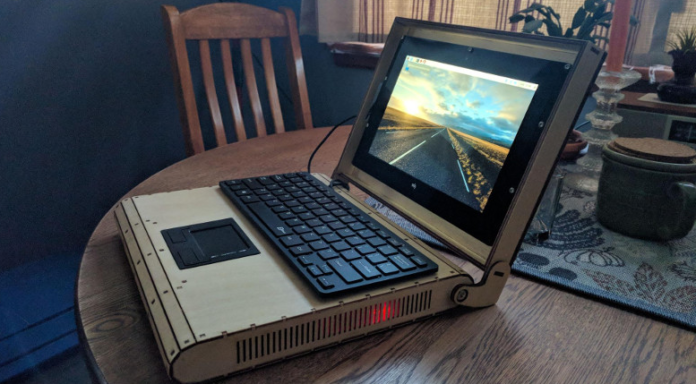If you’re looking to build a Raspberry Pi powered machine, you’ve come to the right place! We’ve rounded up a few neat projects for you to consider.
The first project is a portable’mini laptop’ that’s built with a Raspberry Pi, display, keyboard, Adafruit Powerboost 1000, and a battery. The result is a very compact unit that’s perfect for traveling with.
Pi-Top
The Pi-Top is a modular laptop that helps kids learn to code, design and build electronic devices. Its unique sliding keyboard slides forward and backward over computer components to easily slot in add-ons like speakers, prototyping boards and more.
It also features a magnetic rail that allows students to drop in add-ons without disconnecting the laptop from the computer. Its customised OS includes exclusive apps and software designed to help learners explore computer science, STEAM and coding concepts.
In addition to the customised operating system, the Pi-Top has a built-in mini screen that can be programmed to display information or play games. Its 5-hour internal battery, CPU cooling system and accompanying project kits and components make it a powerful learning tool.
CrowPi
CrowPi is a ready-to-run Raspberry Pi Powered Machine that’s packed with opportunities for exploration, experimentation, education, and fun. It’s a clever device, and a great way to get kids interested in electronics.
Unlike other DIY hardware kits, CrowPi comes pre-assembled so that it’s incredibly easy to wire your sensors and components in the right way. This means that you can avoid accidentally frying any of the hardware, which is an important first step for beginners to learning electronics.
The software that is used to run the kit is also a lot easier to use than traditional versions of the Raspberry Pi. It comes with a number of lessons that teach you how to use the various sensors and buttons included in the package.
Kano
Kano, a company that designs STEM-focused computer kits for kids, is back with a Raspberry Pi-based machine designed to get people interested in coding. It’s launching a Kickstarter campaign today for the first build to reach production.
The kit comes with a custom-built Pi board, a case, updated display driver board, battery, power cable, speaker and more. It also comes with a series of booklets that teach you how to build the computer and how to use its software and hardware.
The Kano OS has a story mode that teaches kids about the basic components of a computer, and a drag and drop coding app. It also has a range of coding challenges that help children learn JavaScript, Python and Unix commands.
LapPi
LapPi is a new DIY laptop kit from SB Components that turns Raspberry Pi’s credit card-sized computer into a laptop with a 7 inch display and detachable wireless keyboard. It’s currently raising funds on Kickstarter, with PS1, 400 collected so far and worldwide shipping expected in 2022.
Designed to be used with any Raspberry Pi single board computer, this modular system enables you to remove, tweak and upgrade components as you see fit. It’s an excellent tool for tinkerers and developers who want to learn more about Raspberry Pi and other single board computers.
This modular system allows you to tinker and connect a wide range of modules and hardware all in a compact battery-powered enclosure. It supports a number of different single board computers in addition to the Raspberry Pi, and it’s available in five bright colors.
Adafruit Mini Handheld Notebook
The Adafruit Mini Handheld Notebook combines a Raspberry Pi 2, a 3.5″ PiTFT Touch Screen display, a keyboard, an Adafruit Powerboost 1000C, and a battery to create the smallest Raspberry Pi-powered computer ever. The enclosure has 3D printed hinges that hold the two halves together, making this a cute, portable computer that can be used to monitor and control prints or check up on webcams. It even has a 2000mAh battery that fits between the LCD screen and the Raspberry Pi, which can be recharged through the PowerBoost 1000C. Alternatively, it can be used as an interactive game console with a joystick and two pushbuttons like those found on a classic games console.
This project is a great way to get started with the Raspberry Pi, or simply for fun if you already own one.


